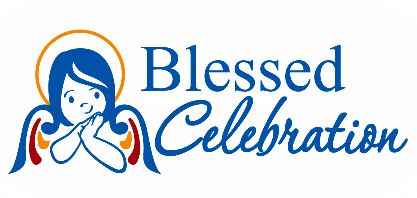Saint Pelagia of Tinos Greek Orthodox Icon
Important Timing Note: These are handcrafted icons from Greece. Average turnaround time is 4 weeks. Please allow 2-5 weeks for delivery. If you are in a rush for the icon, please do not order this handmade item.
~~~
The icon reproductions are created by iconographer monks of various Greek Orthodox monasteries in Greece and all images are approved replications by the Greek Orthodox Church. As icons are considered to be the Gospel in image, these images are accurate and true Orthodox renderings, not second-hand interpretations.
These icon reproductions are prepared in the traditional Orthodox style: a fine detailed image is mounted on solid wood. The mounted image is covered with shellac to provide the luster of a traditional byzantine icon. The icon is then covered with multiple layers of varnish to coat the image with a protective layer that shields the colors from fading and protects from humidity. This Icon also has a hook on the back enabling it to be hung on walls.
These icons are a true Orthodox image approved by the Eastern Orthodox Archdiocese.
Iconographer: Holy Monastery Dormition of Theotokos, Parnitha
Commemorates on: July 23
St. Pelagia, an eighty year-old nun, had several dreams in June of 1822 in which the Most Holy Theotokos appeared to her. St. Pelagia was living in the women’s monastery of the Dormition on Mt. Kechrovounios, about an hour’s journey from the village. She had lived there from a young age, and was known for her great virtue and piety. The Theotokos appeared to her in a dream and ordered her to go to Stamatelos Kangades (a prominent man of the village), and tell him to uncover the church of St. John the Baptist in the field of Anthony Doxaras. Terrified by the vision, Pelagia attributed the dream to her imagination, and she began to pray. She was afraid to tell anyone about her dream, but the following week, the Theotokos appeared to her again, reminding her of her instructions.
Still, the nun remained silent and told no one of her vision. The Theotokos appeared a third time, this time with a severe manner. She chastised the nun for her unbelief, saying, “Go and do as I told you. Be obedient.” St. Pelagia woke up in fear. As she opened her eyes, she saw the same mysterious woman she had seen while asleep. With great effort she asked, “Who are you, Lady? Why are you angry with me, and why do you order me to do these things?” The woman raised her hand and said, “Proclaim, O earth, glad tidings of great joy.” Understanding at last, the aged nun joyfully exclaimed, “Praise, O heavens, the glory of God.” At once, she informed the Abbess of her visions, and she also told Stamatelos Kangades. Mr. Kangades, who had been designated by the Theotokos to carry out the excavation of the church, informed Bishop Gabriel of these events. The bishop had already heard of the dream of Michael Polyzoes, and realized that the account of the nun Pelagia agreed with his vision. Bishop Gabriel wrote to all the churches on the island of Tinos, urging them to cooperate in finding the church and the icon.
Excavations began in September of 1822 under the supervision of Mr. Kangades. The foundations of the church of St. John, destroyed by Muslims in 1200, were uncovered. An old well was found near the church, but not the holy icon. The funding for the excavation eventually ran out, so the effort was abandoned. Once again the Mother of God appeared to St. Pelagia, urging that the excavations continue. Bishop Gabriel sent out an appeal for donations to build a new church on the foundations of the old church of St. John the Baptist. The new church was built, and was dedicated to St. John and to the Life-Giving Fountain.
On January 30, 1823, workers were leveling the ground inside the church in preparation for laying a new stone floor. Around noon, one of the workers, Emmanuel Matsos, struck a piece of wood with his pickax, splitting it down the middle. He looked at one piece of the board and saw that it was burned on one side, while the other side showed traces of paint. As he brushed off the dirt with his hands, he saw that it was an icon. Joining the two pieces of wood together, he crossed himself and venerated the icon. He called the other workers, who also came and venerated the icon. When the icon was cleaned, it was shown to be an icon of the Annunciation. The split was in the middle of the icon, between the Theotokos and the Archangel Gabriel. Neither figure was damaged, and this was regarded as a miracle.
That same day, the icon was given to Bishop Gabriel, who kissed it and cried out, “Great art Thou, O Lord, and wondrous are Thy works.” After the finding of the icon, the inhabitants of Tinos were filled with zeal to build a magnificent church in honor of the Theotokos. People offered their money and their own labor to help build the Church of the Evangelistria. The new church was completed in 1823, and was consecrated by Bishop Gabriel. St. Pelagia of Tinos fell asleep in the Lord on April 28, 1834.
Icons ship direct to you from Greece. Please allow 10-20 days for delivery.



